In today's fast-paced business landscape, the ability to adeptly manage change during project execution is crucial for the success and sustainability of any initiative. As organizations strive for innovation and agility, change becomes an inevitable component of project management. However, failure to appropriately address change can lead to significant setbacks, budget overruns, and unmet stakeholder expectations. This article aims to provide valuable insights into effective change management practices by exploring its fundamental concepts, essential tools, and best practices that can enhance the outcomes of your initiatives.
Understanding Change Management in Projects
Change management, in the realm of projects, refers to the systematic approach to dealing with changes in a project’s scope, objectives, or deliverables. It encompasses the processes, tools, and techniques that ensure changes are efficiently implemented while minimizing disruption. Change is a natural occurrence throughout the lifecycle of any initiative, arising from factors such as shifting market conditions, stakeholder feedback, technological advancements, and resource availability.
The inevitability of change during project execution underscores the importance of having a structured approach to manage it. Unmanaged change can wreak havoc on a project's outcome, resulting in delays, increased costs, and compromised quality. Therefore, understanding the dynamics of change and having a predefined strategy to handle it is vital for maintaining project alignment with organizational goals and stakeholder expectations.
Essential Tools for Change Management
Change Request Form
One of the primary tools for managing change is the Change Request Form (CRF). This standardized document captures essential information about the proposed change, including its scope, rationale, and potential implications. The CRF is a critical component of the change management process, as it provides a structured format for stakeholders to submit their requests systematically. This not only facilitates clarity and consistency but also ensures that no vital details are overlooked during the evaluation process.
Upon submission, the CRF undergoes a thorough review, typically conducted by the project management team. This allows for a collaborative discussion regarding the necessity and impact of the change. Standardizing this process minimizes ambiguity and enhances accountability among team members and stakeholders, ensuring that everyone is on the same page.
Change Log
The Change Log is another indispensable tool that plays a pivotal role in tracking and managing changes within a project. This document serves as a comprehensive record of all approved change requests and their status throughout the project lifecycle. Maintaining a detailed change log provides several benefits, including enhanced visibility into the project's evolution, improved communication among team members, and informed decision-making regarding future changes.
A robust Change Log can also help project managers identify patterns and trends related to changes, facilitating proactive planning and risk management. By having a clear, organized record of all changes, teams can better assess their cumulative impact on the project's overall scope, schedule, and resources.
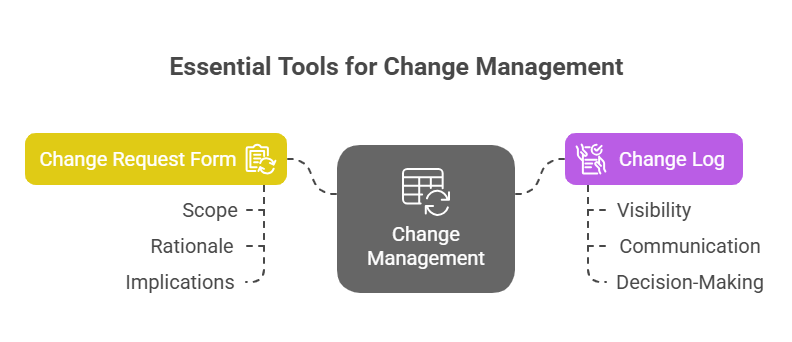
Components of a Comprehensive Change Log
An effective Change Log contains several key components that ensure it remains a valuable resource throughout the project:
- Proposed Change: A detailed description of the requested alteration is vital for understanding its scope and implications.
- Reason for Change: Justification for the change is essential to demonstrate its necessity, especially when evaluating its impact on existing plans.
- Priority of the Change: Classifying changes based on urgency allows teams to prioritize actions and allocate resources accordingly.
- Actions Needed: Specific steps required to implement the change must be outlined to provide clarity and direction for team members.
- Impact Analysis: This assessment evaluates the influence of the change on various project dimensions, including scope, schedule, budget, and resource allocation.
- Status of the Change: Tracking the progress of each change request through stages—such as open, analysis, rejected, approved, in progress, and done—ensures that all team members are aware of where changes stand.
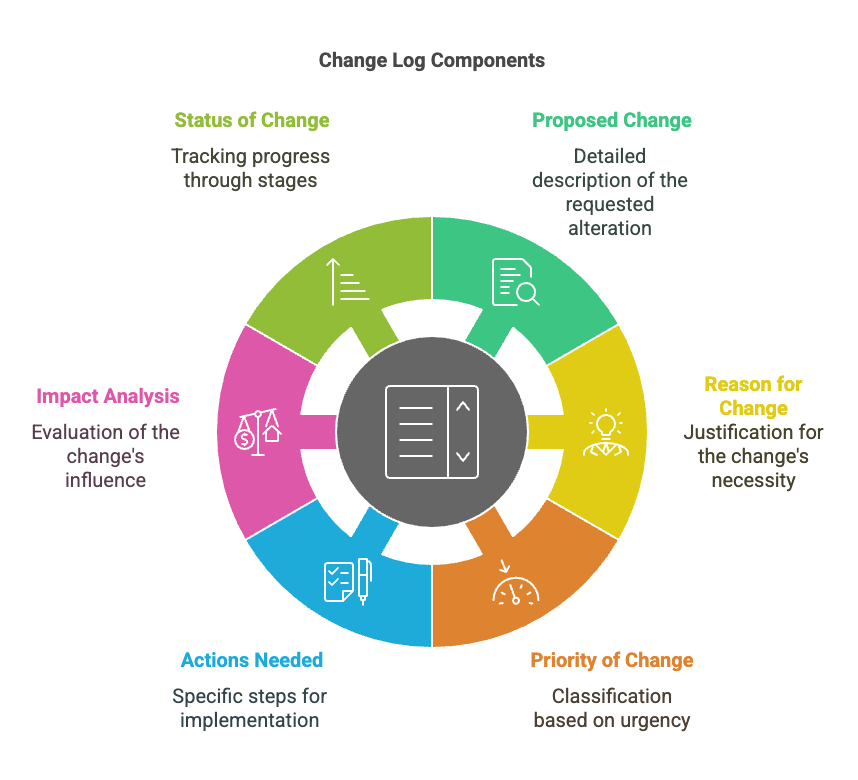
By structuring the Change Log to include these components, project teams can maintain a clear and comprehensive overview of all changes, enhancing coordination and reducing miscommunication.
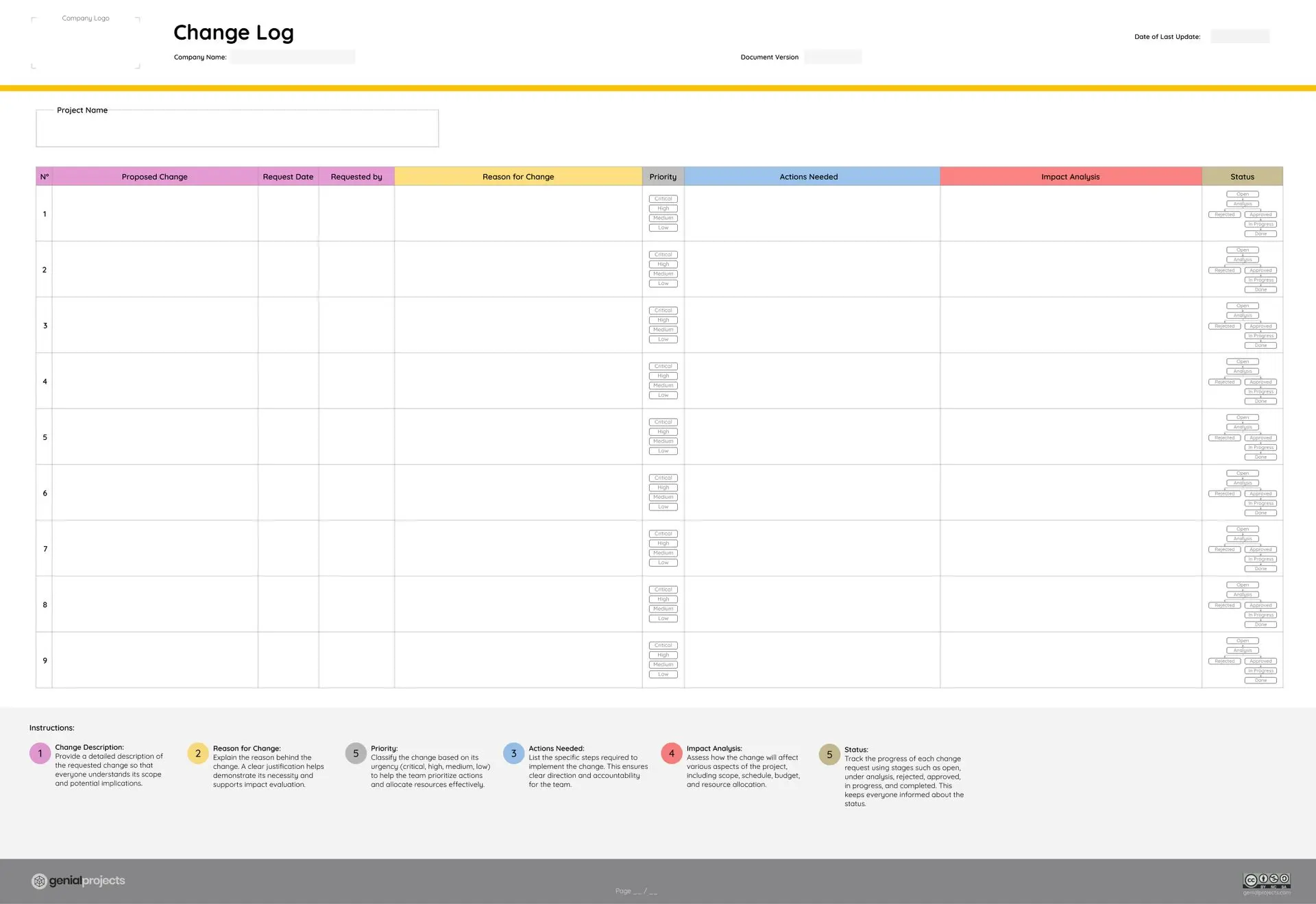
Free Change Log Template
Plantilla de Registro de Cambio gratis
Implementing the Change Management Process
To effectively implement a change management process, several structured steps must be followed. First, all team members or stakeholders should have the opportunity to submit a proposed change, complete with accompanying rationale and priority level. This inclusive approach fosters a collaborative environment and ensures that diverse perspectives are considered.
Once a change request is submitted, the project manager plays a crucial role in updating the Change Log and communicating with stakeholders. This involves identifying the necessary actions, performing an impact analysis to assess the change's effects on the project, and discussing potential ramifications with the project team. If necessary, the project manager may escalate certain changes to higher authorities for approval.
Monitoring the status of changes is vital for ensuring transparency and accountability. Project managers should actively track each change request's progress through various stages, updating stakeholders accordingly. This ongoing communication is essential for maintaining alignment within the team and ensuring that everyone is informed about the project's evolving landscape.
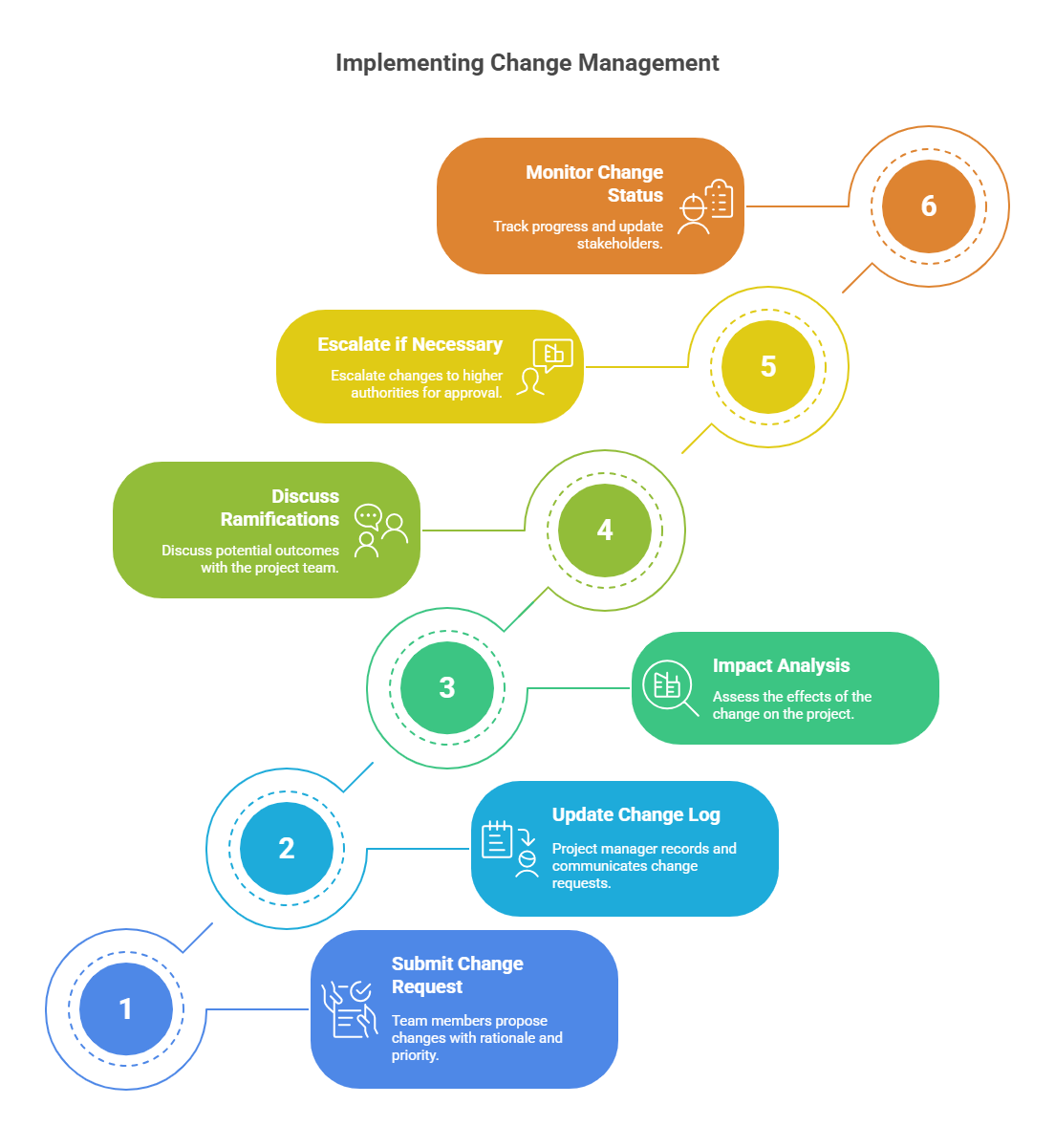
Best Practices for Effective Change Management
Implementing best practices can significantly enhance the effectiveness of your change management initiatives. Firstly, establishing a clear change management process is fundamental for defining roles, responsibilities, and procedures for managing changes. This clarity helps facilitate smoother transitions and enhances the overall efficiency of the project.
Ensuring stakeholder involvement and open lines of communication is equally important. Engaging stakeholders throughout the change management process fosters a sense of ownership and can lead to more informed, collaborative decision-making.
Regularly reviewing and updating the Change Log is another essential practice. This ensures that all team members have access to the most current information regarding changes, fostering clarity and preventing potential conflicts or misunderstandings.
Utilizing technology to streamline the change management process can also yield significant benefits. Employing project management software or digital platforms to automate change requests and updates can save time, reduce errors, and improve overall team efficiency.
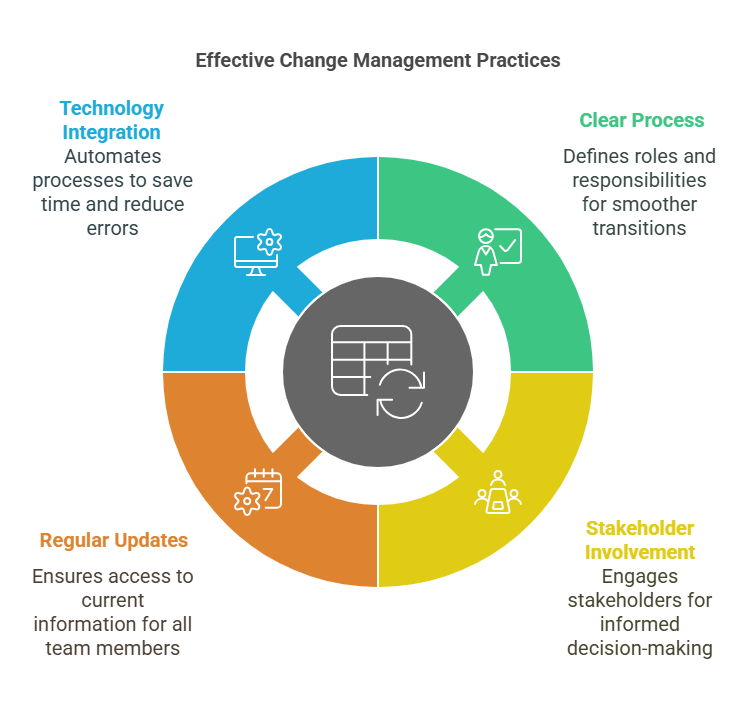
Key Takeaways
In summary, effective change management is crucial for project execution, enabling teams to navigate the complexities of shifting requirements and evolving stakeholder expectations. Tools such as the Change Request Form and Change Log provide valuable frameworks for tracking and managing changes seamlessly.
The key components of an effective Change Log—including proposed changes, reasons for changes, priorities, necessary actions, impact analysis, and status tracking—serve to enhance communication and accountability within the project team. Adopting best practices, such as establishing a clear process, encouraging stakeholder participation, and utilizing technology, can further amplify the benefits of effective change management.
In conclusion, mastering change is not just a necessity—it is an essential component for the success of any initiative. By implementing a structured approach to managing change, organizations can better position themselves to adapt and thrive in an ever-evolving landscape.